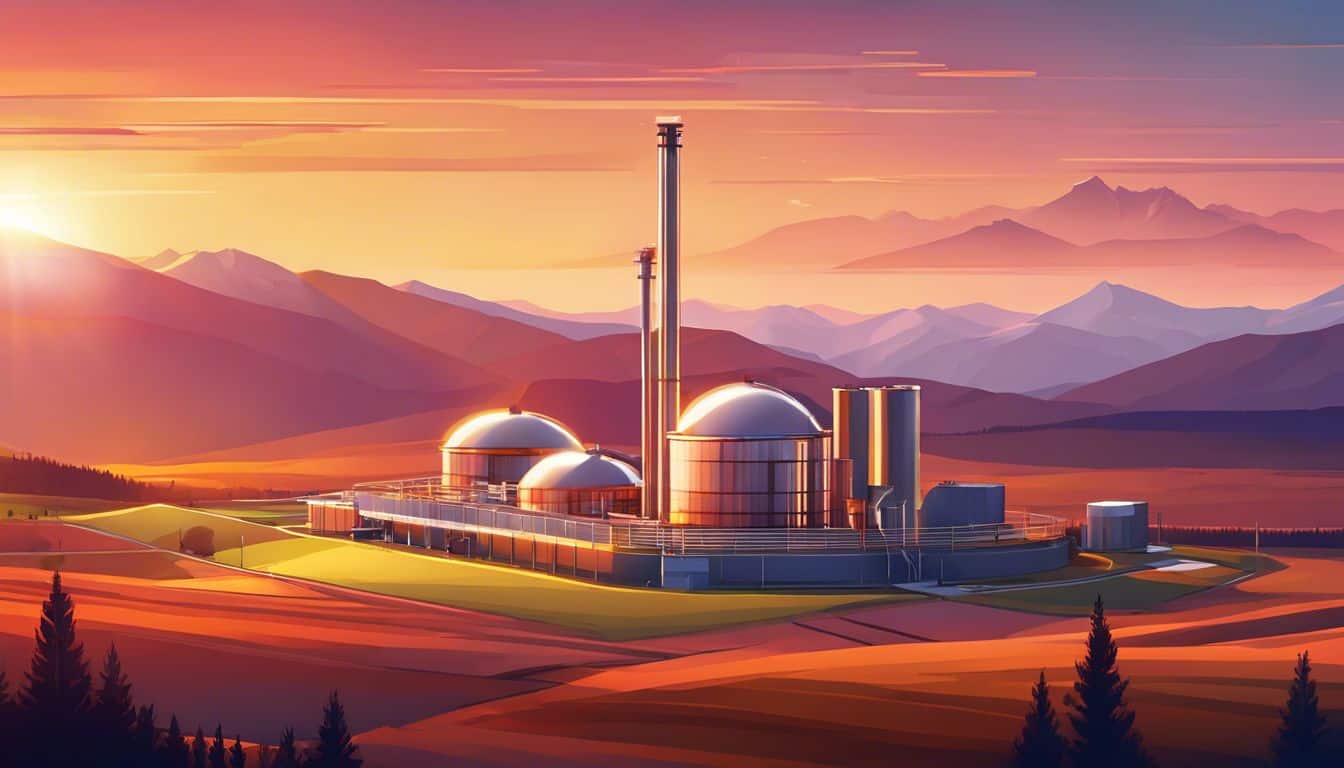In the rapidly evolving landscape of renewable energy, Concentrating Solar Power (CSP) stands out as a promising technology with the potential to revolutionize how we harness the sun’s energy. This broad overview will explore CSP’s fundamentals, applications, and future prospects, shedding light on its role in our transition to a sustainable energy future.
Fundamentals of Concentrating Solar Power
Concentrating (or “concentrated”) Solar Power, often called CSP, is a solar energy technology that uses mirrors or lenses to focus a large area of sunlight onto a small area. This concentrated light is then converted into heat, which drives a heat engine (usually a steam turbine) connected to an electrical power generator. Unlike traditional photovoltaic solar panels that directly convert sunlight into electricity, CSP systems use the sun’s heat to generate power, allowing for more efficient energy storage and dispatchable power generation.
The key components of a CSP system include:
- Mirrors or lenses (concentrators)
- Receivers (to absorb the concentrated sunlight)
- Heat transfer fluids
- Power generation systems (turbines or engines)
- Thermal energy storage systems (in many cases)
Types of CSP Systems
There are four main types of CSP systems, each with its unique design and advantages:
Parabolic Trough Systems
Parabolic trough systems use curved mirrors to focus sunlight onto a receiver tube that runs along the focal line of the trough. A heat transfer fluid, typically synthetic oil, flows through the tube and is heated to high temperatures. This hot fluid is then used to generate steam, which drives a turbine to produce electricity.
Power Tower Systems
Also known as central receiver systems, power towers use a field of flat, sun-tracking mirrors called heliostats to focus sunlight onto a receiver at the top of a tall tower. The concentrated sunlight heats a fluid, often molten salt, which generates steam for electricity production.
Linear Fresnel Reflector Systems
Linear Fresnel systems use long, flat, or slightly curved mirrors to concentrate sunlight onto a fixed receiver positioned above the mirrors. This design is more straightforward and potentially less expensive than parabolic troughs but may have lower efficiency.
Dish/Engine Systems
Dish/engine systems consist of a parabolic dish-shaped concentrator that focuses sunlight onto a receiver at the focal point. The receiver is typically integrated with a heat engine, such as a Stirling engine, which generates electricity directly.
How CSP Works: Step-by-Step Process
The process of generating electricity through CSP involves several steps:
- Solar collection and concentration: Mirrors or lenses focus sunlight onto a receiver.
- Heat absorption and transfer: The receiver absorbs the concentrated sunlight, heating a transfer fluid.
- Steam generation: The hot transfer fluid is used to create steam.
- Power generation: The steam drives a turbine connected to a generator, producing electricity.
- Energy storage (optional): Excess heat can be stored in thermal energy storage systems for later use.
For a detailed exploration of CSP innovations and cutting-edge developments, check out our concentrated solar power innovations guide.
Thermal Energy Storage in CSP
One of the most significant advantages of CSP over other solar technologies is its ability to incorporate thermal energy storage. This allows CSP plants to continue generating electricity even when the sun isn’t shining, providing dispatchable power to the grid. Common storage mediums include molten salts, which can retain heat for several hours or even days.
Applications of CSP Technology
While electricity generation is the primary application of CSP, the technology has several other potential uses:
- Industrial process heat for manufacturing.
- Water desalination in arid regions.
- Enhanced oil recovery in the petroleum industry.
- Chemical and mineral processing.
Advantages of Concentrating Solar Power
CSP offers several benefits over other renewable energy technologies:
- High efficiency and capacity factor
- Dispatchable power generation, thanks to thermal storage
- Reduced environmental impact compared to fossil fuels
- Potential for hybrid systems, combining CSP with other energy sources
Challenges and Limitations
Despite its potential, CSP faces some challenges:
- High initial costs compared to photovoltaic solar
- Geographic and climatic constraints (requires areas with high direct solar radiation)
- Water usage concerns, particularly in arid regions
- Environmental considerations, such as land use and impact on local ecosystems
Global CSP Projects and Developments
CSP technology is being deployed worldwide, with notable projects in Spain, the United States, Morocco, and China. Emerging markets in the Middle East and North Africa show great potential for future CSP development.
Economic Aspects of CSP
While CSP has higher upfront costs than some other renewable technologies, its costs are declining as the technology matures. Government incentives and policies play a crucial role in supporting CSP development and deployment.
Environmental Impact and Sustainability
CSP systems have a relatively low environmental impact compared to fossil fuel power plants. However, considerations such as land use, water consumption, and potential effects on local ecosystems must be carefully managed.
Future of Concentrating Solar Power
The future of CSP looks promising, with ongoing research focusing on:
- Improving efficiency and reducing costs
- Developing new heat transfer fluids and storage materials
- Integrating CSP with other renewable energy sources
- Exploring the potential for space-based solar power using CSP principles
Conclusion
Concentrating Solar Power represents a significant step forward in our quest for sustainable, reliable, and efficient renewable energy sources. As technology advances and costs continue to decrease, CSP is poised to play an increasingly important role in our global energy mix. By supporting research, development, and deployment of CSP technology, we can accelerate the transition to a cleaner, more sustainable energy future.

Leave a Reply